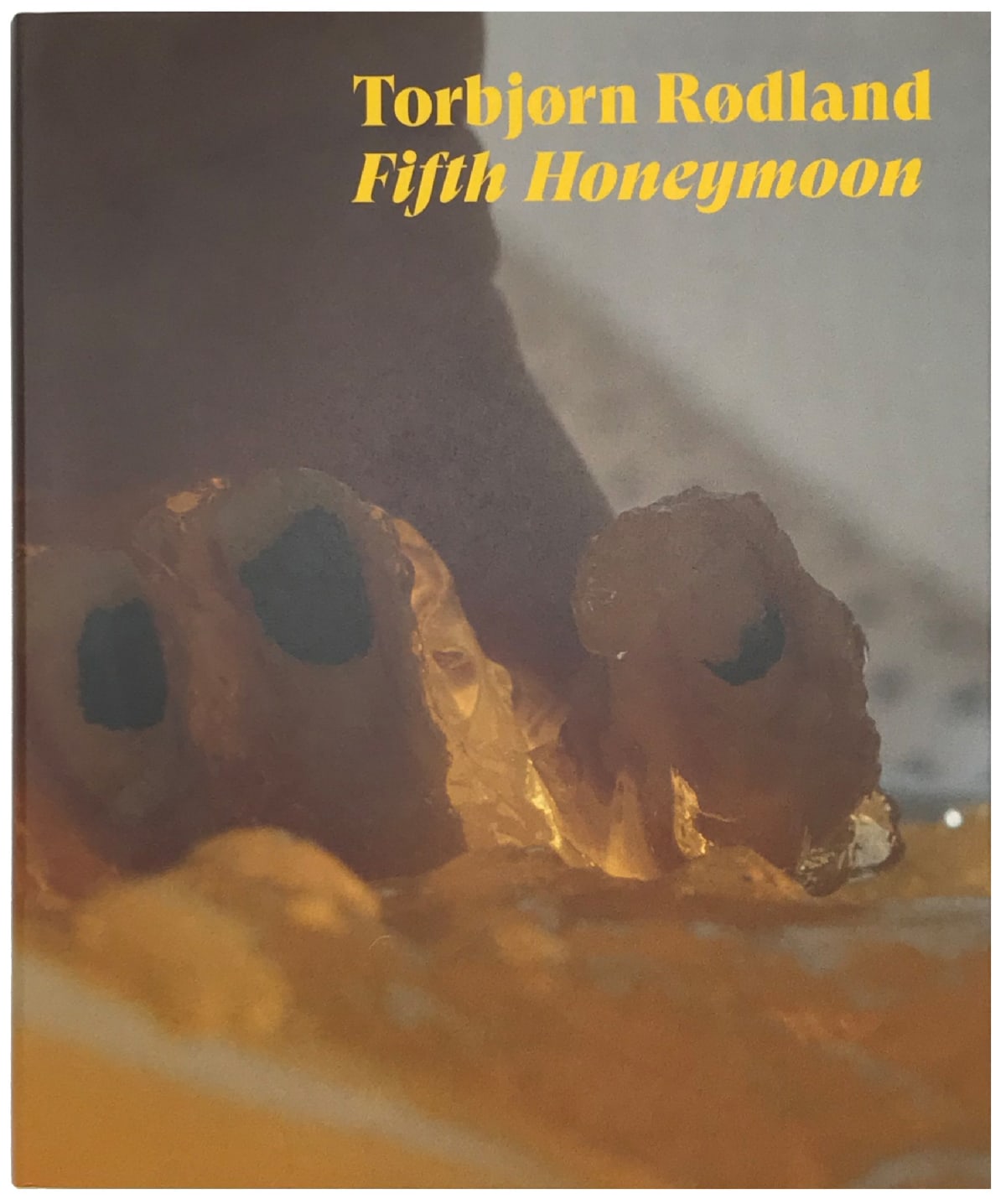TORBJØRN RØDLAND: "Fifth Honeymoon"
TORBJØRN RØDLAND
“FIFTH HONEYMOON”
13.03.-02.06.2019 / BONNIERS KONSTHALL, STOCKHOLM
-----
This spring's major exhibition with Torbjørn Rødland, Fifth Honeymoon , is a tightly composed presentation that unfolds through the art gallery's various rooms. The exhibition mostly consists of new photographs and a film, supplemented by a smaller selection of older works.
Using the contractual commitment of marriage and the emotional journey of the honeymoon as metaphorical frameworks, the works tackle themes such as religion, spirituality, eroticism and the spark that creates new human relationships. Compositional gestures such as repeated jump pairings and the presence of the number five add to the theme, while Torbjørn Rødland's tactile image-making also brings out the honey-like connotations of the exhibition title "Honeymoon": sweet, sticky and liquid substances adhere to the symbolically charged objects and figures in the compositions.
An important work in the exhibition is the new film Between Fork and Ladder, filmed in Los Angeles and the scenic landscape of northern Lofoten in Norway. Objects and visual elements from the photographs can be found in the video, in which a 10-year-old boy performs a musical song while cutting out cartoon images of the controversial internet phenomenon Pepe the Frog from printed fabric. The steps indicate a longing for spiritual development and personal maturity, while the lyrics performed by the young protagonist relate to a quiet desperation in the face of all the open possibilities in his future life. A Japanese anime-style narrator appears to provide constructive guidance, quoting American philosopher Ken Wilber. The film highlights an underlying tension within the exhibition: between the soft and comforting on the one hand, and the desperation of an existential crisis on the other.
The exhibition features color photographs of faces, bodies and objects arranged on table tops as well as double exposures in black and white. The human body appears in Rødland's work both as portraits and individual body parts, such as hands, feet, ankles, knees and faces - or appear as staged, typologized "characters" caught in the middle of an apt moment. The isolated body parts are treated in the same constructed way as the choice of objects and surfaces that we encounter in other images.
Rødland's integration of aesthetic categories, such as the lyrical, the romantic and the cute, is about taking the sensuality of photography seriously and examining the seductive qualities of a photographic moment. In this way, Rødland treats the photograph as materiality, as a manipulative medium to convey emotions and as a socio-culturally predetermined phenomenon in contemporary culture. He brings a slowness to what is superficially a fast-consumed world of commercial images (borrowed from advertising, fashion and film). The images resist quick interpretation and hold the viewer in a visual search that gradually reveals new layers of both disgust and joy.
This complexity is perhaps the most defining feature of Rødland's images. With a background in a photographic tradition from the 1990s, Rødland maintains a level of analytical reflection around photography as an object. His practice marks a continuation of and break with the image generation of the 1980s, where the "image" became the subject of complex analysis via critical theory, cultural studies, feminist criticism, appropriation and postmodernist thinking.
Even with this background, Rødland is primarily an image creator. He consistently avoids allowing the individual image to close in on itself in a self-referential and self-sufficient whole, but rather contributes to the opening of the image and its more active involvement in the world.
-----
Photography Jean-Baptiste Beranger


